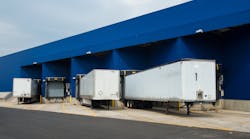Budgets are tight, and the last thing facilities need at the peak of their earnings season is to lose productivity to downtime. Docks and doors are critical when it comes to keeping your facility running smoothly. Recently businesses have been able to quantify in dollars just how large an impact they can have.
In my experience, I’ve witnessed some of the largest Fortune 500 companies lose between $700,000 to $1 million per loading dock every single day when inoperable. This also means hours of labor must be reallocated to rerouting deliveries and shifting employees. That’s an enormous opportunity lost, especially when it happens during the busiest time of year.
With peak season approaching, facility managers have plenty on their minds already. But because of the potential impact to business, the functionality of their docks and doors need to be high on that list of concerns. As you prepare your team for the holiday season, here are some issues to keep in mind to ensure you maintain functional docks and doors and prevent downtime.
Understand Equipment Limitations
I’m a firm believer that facility leaders need to be educated on the limits of what their equipment can and cannot do, especially dock levelers. They need to know and understand the ratings on their equipment and the average weight and number of cargo loads their facilities are moving using this equipment.
The majority of buildings I’ve worked with have the minimum specs and might not even know it. Considering that the use of your loading equipment can nearly triple this time of year, you should be prepared to ask your account manager the logistics questions to create a tailored solution for your facility.
Schedule Preventative Maintenance
Proper maintenance is the most powerful tool in your belt when it comes to keeping equipment in top shape. Your maintenance plan will include monitoring for things like broken welds, debris under the dock leveler, and proper lubrication. Your equipment will naturally wear down—especially in peak season—but catching broken structural components early is critical in keeping your facility online.
For heavy use, any facilities that have more than two shifts per day should have a quarterly maintenance plan. One or two shifts can scale back to bi-annual maintenance, and facilities working one shift per day can reasonably expect annual maintenance.
Ensure Proper Lubrication and Tension
The right amount of lubrication will ensure the component parts of your equipment aren’t sticking, creating the risk of damage or injury to the person operating them. Lifting springs also require the appropriate tension and a door that operates level in the opening to avoid the possibility of injury to employees. Without the proper tension, the door will drift back down into the opening, increasing the risk of forklift operators hitting the bottom section of the door as they focus on the shipments within the truck.
Be Mindful of Vehicle Restraints
Vehicle restraints lock the trailer to the building and act as a communication tool between the truck driver and forklift operator. They significantly reduce the risk of injury and ensure no one is moving equipment when the other party isn’t ready. OSHA recorded an average of 72 deaths per year in the U.S. when trailers pull away while a forklift is operating, so restraints become a critical piece in protecting your team. Taking care of these devices means scheduling regular cleaning and lubrication, along with immediate action when indicator lights aren’t working properly.
The docks, doors and levelers of your facility will be stressed as demand surges in peak season. With proper maintenance and use, you can help to keep things running smoothly and avoid incidents. Finding a good partner before peak season can help when it comes to reaching peak efficiency, creating a proactive maintenance strategy, and avoiding incidents. A good partner will have an in-depth knowledge of your facility and will be there to take away any headaches that might arise so you can maintain your focus on moving operations to meet demand.
Gabe Spagle is operations manager at Miner, the docks and doors special division of OnPoint Group. He has worked in the facility services sector for more than a decade supporting large-scale facilities and Fortune 500-class companies mitigate risk and improve efficiency.



